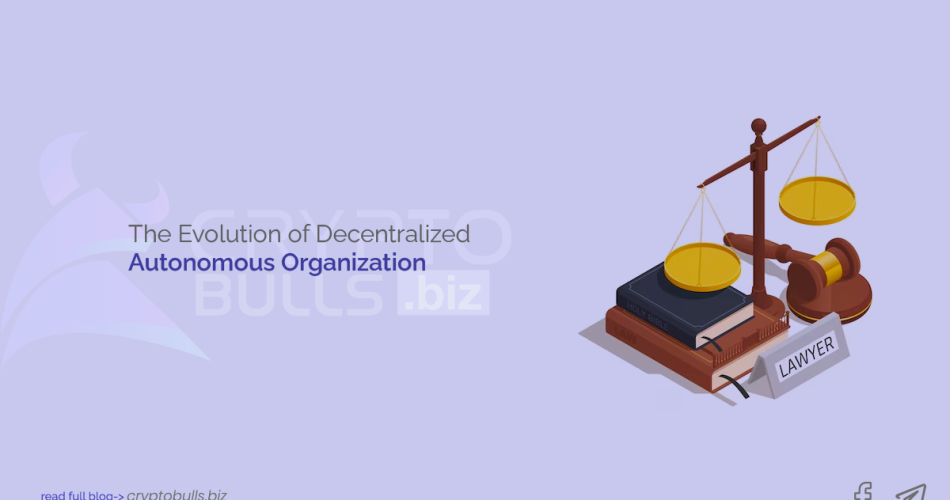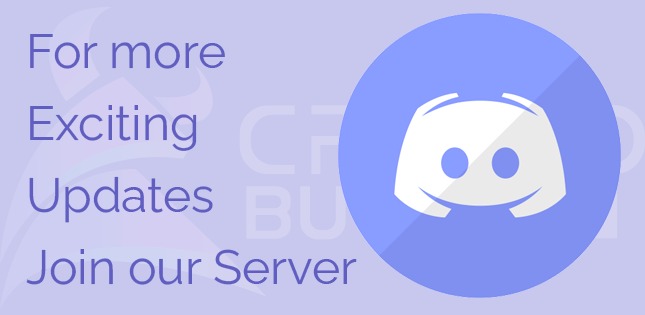DAOs Demystified: The Evolution of Decentralized Autonomous Organization
The DAO, short for decentralized autonomous organization, emerged in April 2016 as a groundbreaking venture on the Ethereum blockchain, embodying a new era in decentralized business models. Operating through smart contracts and devoid of traditional management structures, it aimed to revolutionize both commercial and non-profit enterprises. However, its ambitious journey was abruptly halted in June 2016 when hackers exploited vulnerabilities, siphoning off a significant portion of its funds.
The subsequent decision by the Ethereum community to hard-fork the blockchain, restoring the funds and giving rise to Ethereum Classic, sparked controversy and discussions surrounding governance in decentralized autonomous organizations.

What is a DAO?
Decentralized Autonomous Organizations (DAOs) represent a cutting-edge legal structure, embodying a paradigm shift in governance without a central authority. In this innovative model, members, often token holders, collaboratively steer the entity towards shared objectives. The absence of a centralized governing body is a defining feature, with decision-making power distributed among token holders who exercise their influence through votes.
Notably, the transparency of DAO operations is upheld by recording all votes and activities on a blockchain, ensuring public visibility. The inception of pioneering DAOs, exemplified by The DAO, marked a milestone in automating decision processes within the realm of cryptocurrency transactions. However, the vulnerability of DAOs to security breaches, leading to substantial financial losses, underscores the critical need for robust security measures in this dynamic and evolving landscape.
What does a DAO do?
A DAO is like a digital club that runs on the internet without a boss. Instead of having one person in charge, everyone who’s part of the club gets a say by voting with special tokens. These votes happen on the computer system called the blockchain, making everything super transparent. It’s a new way of organizing things without a central leader, and it’s a big deal in the world of digital money and technology.
The DAO’s transparent nature, recorded on a distributed ledger, ensures accountability in decision-making. While incidents like The DAO hack in 2016 exposed vulnerabilities, the concept remains integral to the evolving landscape of digital currencies and blockchain technology, challenging traditional notions of organizational structures and governance.
TOP 3 DAO on the bases of different aspects
UNISWAP
Total Proposals:52
Lifetime Voters:16,770
Proposal Authors:28
Proposal Pass Rate:97%
Avg. Participation Rate:19.2%

Total Proposals:234
Lifetime Voters:6,198
Proposal Authors:55
Proposal Pass Rate:80%

Total Proposals:369
Lifetime Voters:9,490
Proposal Authors:46
Proposal Pass Rate:93%
Avg. Participation Rate:2.5%

When were DAOs first created?
In May 2016, a group of Ethereum community members introduced The DAO, also known as Genesis DAO, as a smart contract on the Ethereum blockchain. Although the Slock. It team developed the open-source coding framework, it was the Ethereum community members who deployed it under the name “The DAO.” During a creation period, anyone could send Ether to a special wallet address and, in return, receive DAO tokens at a rate of 1 to 100. Surprisingly, this period was a massive success, attracting 12.7 million Ether (worth about $150 million then), making it the largest crowdfund ever. At one point, when Ether was valued at $20, the total Ether from The DAO reached over $250 million.
Steps For Launching a DAO

Creating a DAO involves a series of steps to ensure its purposeful development and successful functioning:
- Determine DAO’s Purpose and Goals: Clearly define the objectives and mission of the DAO, outlining the problems it aims to solve or the goals it seeks to achieve.
- Define DAO’s Tokenomics Strategy: Establish the token system, including distribution, utility, and governance rights. Decide on factors such as token supply, issuance mechanisms, and how tokens contribute to decision-making.
- Build a Community: Foster a community around the DAO by engaging potential members through social media, forums, and other channels. Cultivate interest and support for the DAO’s mission.
- Specify the Governance Structure: Outline the rules and processes for decision-making within the DAO. Define how voting mechanisms work, the role of tokens in governance, and any specific parameters for decision implementation.
- Define the Type of DAO: Determine the DAO’s classification, whether it’s a fundraising DAO, a decentralized application (DApp) DAO, or another type. Tailor the structure to suit the intended purpose.
- Build a DAO: Develop the DAO using smart contract technology on a blockchain platform, such as Ethereum. Code the rules, tokenomics, and governance structures into the smart contract.
- Test a DAO: Conduct thorough testing to identify and resolve any vulnerabilities or issues in the smart contract. This step ensures the DAO’s robustness and security.
- Deploy a DAO: Once testing is successful, deploy the DAO to the chosen blockchain. Make the DAO accessible to the community, and begin its active operations.
By following these eight steps, you can methodically create, test, and deploy a DAO that aligns with its intended purpose and engages a supportive community in its governance.
Components of DAOs
Absolutely, you’ve captured the key components succinctly. Let’s break it down:
- Blockchain Technology: The foundational technology that underpins DAOs, ensuring transparency, security, and decentralization. It serves as the immutable ledger where all transactions and activities are recorded.
- Smart Contracts: Self-executing contracts with the terms of the agreement written directly into code. In the context of DAOs, smart contracts automate various functions, such as voting, fund transfers, and decision-making processes, reducing the need for intermediaries.
- Governance Mechanism: The set of rules and processes that dictate how decisions are made within the DAO. This can include voting mechanisms, proposal submission processes, and rules for modifying the DAO’s code.
- Treasury Tools: Tools or mechanisms to manage the DAO’s funds and resources. This often involves the creation of a treasury where funds are stored and can be allocated based on community decisions.
- DAO Token: A digital asset created by the DAO, often distributed during a fundraising period, that grants holders certain rights within the organization. These tokens may represent voting power, ownership stakes, or other privileges tied to the DAO’s functions.
By combining these components, DAOs aim to create decentralized, autonomous entities that operate transparently and democratically, allowing community members to actively participate in decision-making and governance processes.
Benefits and Disadvantages of DAOs
Benefits
Decentralized Autonomous Organizations (DAOs) offer transparency, inclusivity, and efficiency by leveraging blockchain and smart contracts. They empower participants with direct influence over decisions and resource allocation, fostering a democratic and community-driven approach. DAOs can streamline processes, reduce bureaucracy, and create novel funding models, making them agile and adaptable to various industries.
Disadvantages
However, DAOs face challenges such as susceptibility to security vulnerabilities, as seen in past hacks, which can lead to substantial financial losses. Additionally, the complexity of governance structures and decision-making processes may pose a barrier to widespread adoption. Balancing decentralization with effective management and addressing legal ambiguities remain ongoing concerns, highlighting the need for careful consideration and development in the evolving landscape of decentralized finance.
Examples of DAOs
Several notable examples of Decentralized Autonomous Organizations (DAOs) have emerged across various industries:
- The DAO (Genesis DAO): While its history includes a significant hack and subsequent hard fork, The DAO is a pioneering example that laid the groundwork for subsequent DAO developments.
- MolochDAO: Focused on supporting Ethereum development, MolochDAO is a community-driven organization that pools funds for Ethereum-related projects and proposals.
- MakerDAO: Integral to the decentralized finance (DeFi) ecosystem, MakerDAO manages the stablecoin DAI through a system of smart contracts and governance tokens, allowing users to collateralize assets and generate DAI.
- Aragon: Aragon provides a platform for creating and managing decentralized organizations. It facilitates the creation of DAOs with customizable governance structures, voting mechanisms, and token issuance.
- dxDAO: A decentralized autonomous organization for decentralized finance (DeFi) protocol development and governance, dxDAO is known for its efforts in contributing to and managing DeversiFi, a decentralized exchange.
- DAOstack: Offering a platform for building and managing DAOs, DAOstack enables users to create organizations with customizable governance structures, voting mechanisms, and decision-making processes.
These examples showcase the diverse applications of DAOs, from governance and funding in the blockchain space to broader decentralized organizational structures. As the technology continues to mature, DAOs are likely to play an increasingly prominent role in various sectors.
Conclusion
Decentralized Autonomous Organizations (DAOs) are reshaping organizational structures by harnessing blockchain and smart contract technologies to enable transparent, community-driven decision-making. While notable examples like The DAO, UniswapDAO, and MakerDAO have pioneered this space, their significance extends beyond the blockchain industry. These innovative entities promote inclusivity and efficiency, although they grapple with challenges such as security vulnerabilities and governance complexities. As they evolve, striking a balance between decentralization and effective management remains essential for their continued impact on collaborative and governance models in the digital age.


